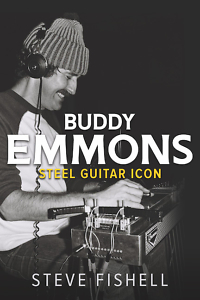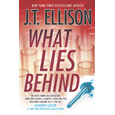Man of Steel
Buddy Emmons’ name was synonymous with the sound of his beloved steel guitar
Early in Buddy Emmons: Steel Guitar Icon, Steve Fishell’s deft and lively biography, we meet the future legend as a skinny, high school-hating, 14-year-old boy on his bike, hanging around outside a bar, fascinated by what’s taking place inside.
 “As the club door swung open,” Fishell writes, “he ignored the loud barroom crowd, the thick clouds of cigarette smoke, the clinking sounds of beer bottles and shot glasses, and the waitresses yelling their drink orders. Instead, he laser-focused on the stomping country band blaring from the bar’s stage.”
“As the club door swung open,” Fishell writes, “he ignored the loud barroom crowd, the thick clouds of cigarette smoke, the clinking sounds of beer bottles and shot glasses, and the waitresses yelling their drink orders. Instead, he laser-focused on the stomping country band blaring from the bar’s stage.”
The bar was the Majorette Tavern in Buddy’s native Mishawaka, Indiana. The band was Bob Reed and Choctaw Cowboys.
A year later, at 15, Emmons was in the band, playing a blonde triple neck Fender Custom “Stringmaster” console steel guitar. As he wrote in the unpublished memoirs that Fishell weaves effectively into this bio, “I was ready to play music for a living.”
What a living. What a life. Over the next half-century, Emmons became a pedal steel virtuoso while playing with everyone from Little Jimmy Dickens to Linda Ronstadt, George Jones to George Strait, Ray Charles to the Everly Brothers. He was also an innovator, improving the mechanisms of the instrument and designing his “Emmons Original” model.
As Fishell, a pedal steel guitarist, producer, and educator, writes in the preface:
Buddy Emmons was that rare genius whose right brain’s creative talents matched his left brain’s critical thinking. He could play solos so achingly beautiful that listeners wept, then shift gears and imagine unparalleled improvements to the instrument’s pitch-bending system, for which he received a U.S. patent in 1969.
Fishell has recorded with the likes of Dolly Parton, John Prine, and Emmylou Harris, and he brings a musician’s knowledge to the subject. You don’t have to recognize an ascending 13th chord or C6 tuning, but it might help at times. Mostly, though, he gives us Buddy Emmons, a human being with quirks and flaws who happened to have preternatural talent and an almost preposterous drive for divining new and more expressive sounds from his instrument.
 We see young Buddy, already hooked on music but coming reluctantly to the steel guitar, his dad’s favorite instrument. We see him clashing with his music teacher on his way to becoming a self-taught player.
We see young Buddy, already hooked on music but coming reluctantly to the steel guitar, his dad’s favorite instrument. We see him clashing with his music teacher on his way to becoming a self-taught player.
He learned through repetition and by listening to records. He listened not just to his steel guitar heroes like Joaquin Murphey of Spade Cooley’s Western swing band, but also jazz greats like saxophonist Charlie Parker.
Still in his early teens, Emmons struck upon maybe the most fascinating musical self-improvement method this side of Robert Johnson’s mythical trip to the crossroads: He practiced in the dark.
“Once I got into it, I started figuring out how to find my way without looking,” Emmons said. “I liked the feeling of what went on in my head when the lights were out.”
His playing was lights out in every sense. Fishell puts us on the road, in the studio, and in the jam sessions that Emmons especially loved, showing the impact of his playing on fellow musicians. Time and again, they were awed by his inventiveness. Or merely by his presence: “I was intimidated,” country superstar Vince Gill said of working in the studio with Emmons in 2005.
We also see Emmons the man, with his “rough edges and idiosyncrasies,” as Fishell writes. We see his temper, which he tried, not always successfully, to control. We see the drinking, the pills, the domestic tumult — but also the long, happy third and final marriage, to Peggy Hix, who “rescued Buddy from his dark side.”
No doubt, it was often difficult to be Buddy Emmons, steel guitar icon. If it wasn’t the self-imposed pressure of driving himself to perfection, it was the fawning of admirers telling him how great he was.
But Buddy Emmons: Steel Guitar Icon is an uplifting book, filled with inspiring music and inspired innovations. That’s the legacy of Emmons, who died in 2015 of heart failure at age 78. He was a musician who didn’t just master an instrument, but made it speak new languages, whether the music was country, jazz, folk, or Western swing.
If you’re looking for an example of Emmons’ playing, try his bluesy swirl on Ray Price’s 1963 version of the Willie Nelson classic, “Night Life.” Linda Ronstadt, interviewed by the author, talks about hearing the record for the first time, in the company of a pedal steel player she was dating.
The boyfriend identified Emmons’ playing and called him “the best one.”
Said Ronstadt: “It was voicings and a texture I’d never heard before on the pedal steel. I was completely smitten.”
Or consider what Brenda Lee said: “I think Buddy Emmons made the steel guitar sexy.”
Kind of makes you want to hear some of that man-of-steel magic, huh? So go ahead. Start exploring. And let this fine biography be your guide.

David Wesley Williams is the author of the novel Long Gone Daddies (2013) and the forthcoming Everybody Knows (JackLeg Press, January 2023). His short fiction has appeared in Oxford American, Kenyon Review Online, and in Akashic Books’ Memphis Noir. He lives in Memphis.


